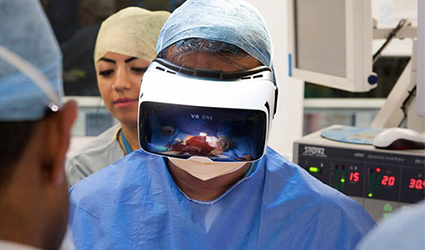Augmented Reality Holds Potential in Cancer Treatment
August 8, 2018
Source: The Verdict
 885
885

A European Radiology Experimental journal article describes how a team of researchers have established and validated an augmented reality system that could enable high accuracy interventional cancer treatments.
The research was conducted in Italy at a tech firm called R.A.W. The augmented reality was implemented during an operation where it was imperative for a needle to accurately target a lesion on the liver. They discovered that augmented reality could assist needle guidance with very high precision.
The system is developed to concurrently visualise 3D anatomical structures, tumour targets and interventional devices superimposed on the patient’s body. The researchers believe the technology has the potential to guide interventions without requiring added real-time imaging during the procedure and can, hence, evade the want for radiation exposure.
Three experimental models were used to evaluate the augmented reality system, functioning via a tablet, a needle handle and a set of markers. A male anthropomorphic trunk phantom with five polyvinyl chloride bars was used at first to study the accuracy of the system without respiratory movement or tissue oppression.
Minute metallic targets were also positioned in a pig model to assess how respiration influences the system accuracy. Thirdly, the system’s performance on a corpse with liver metastasis was tested.
Tremendously high targeting accuracy was achieved in all investigational settings.
The findings from these experiments advocate the technology for potential use in clinical practice in the future and the researchers believe further evaluation of their augmented reality system in clinical scenarios is justified.
By DduRead more on
- Things to Know before Buying Newborn Baby Incubators March 31, 2022
- Highly Resistant Food Poisoning Bug Responds to Antibiotics September 6, 2018
- Smartphone Based Diagnosis to Identify Mosquitoes Transmitting Infection September 5, 2018
- 3 Natural Plant Extracts Manufacturers on Drugdu.com September 4, 2018
- Shenzhen Chuanggan – Health Assessment Facility Supplier September 4, 2018
your submission has already been received.
OK
Subscribe
Please enter a valid Email address!
Submit
The most relevant industry news & insight will be sent to you every two weeks.



